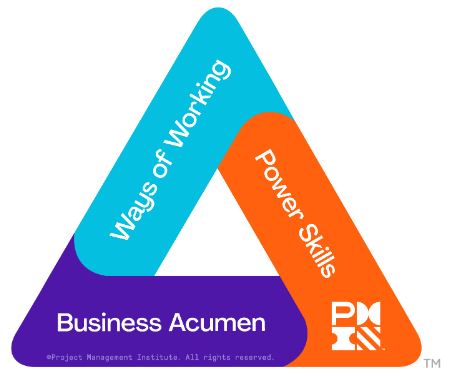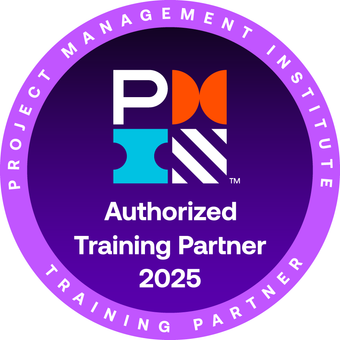
PMI Talent Triangle: Power Skills (Leadership)
Welcome to the PMO Strategies Podcast + Blog, where PMO leaders become IMPACT Drivers! We are in the 4th step to revolutionizing your PMO leader mindset. If you haven’t listened to episode 000, the Introductory episode or 001, The PMO Reset, or 001, The PMO Reset, or 002 talking all about instilling focus, 003 redefining what success looks like, or the previous 004 on how to perform relentlessly – then take a few minutes go back and review those first. Starting at the beginning show you the evolution that landed us here, and help you understand how adapting plays into securing your PMO’s future.
Survival of the fittest?
What’s all this talk about PMO “survival skills” for PMO leaders? It’s time to shed this belief that the best you can hope for as a PMO leader is to simply survive. PMO leaders that are in constant survival mode can’t possibly have the mental space or peace of mind to drive high-IMPACT. If you are continually worrying about whether you will have a job in six months, how can you possibly perform at your best? I think this survival mindset that is being perpetuated in writings and teachings is setting PMO leaders up for failure from the start. We need to be looking for techniques that will help us thrive, grow, develop, and mature our PMOs. This means we need to stop getting ourselves into this position in the first place. IMPACT PMO Leaders avoid survival mode by being flexible, adaptive, and providing services and support that are exactly what their business leaders need when and how they need it.
1. Adapt Your Management Style
To thrive, you will need to be able to adjust your management style, based not only on the needs of the individual but the significance of the change you are creating. Yes, we must manage everybody independently, because different people have different needs in terms of personality, reward, and accountability. We also need to manage them according to how familiar they are with the change we are trying to create and the IMPACT that change will have on the organization. For example, if you’re building a PMO for the first time in an organization, it’s never been done before, then people’s understanding of what to expect and how to engage is going to be low. This means that we will need to deeply consider the organizational change management components of doing something that’s never been done before. Meaning, how will we bring people with us through the change process so that they embrace this change fully and engage in driving toward the IMPACT we are all trying to create? You will have a different set of challenges if the PMO has been tried before many times and failed, but those challenges still require a strong focus on bringing people with you through the change process, doing change with them instead of to them. You’re likely to hit a lot of change resistance and a slow ability to absorb the changes that are being created by your PMO. Being able to flex your management style to meet your stakeholders where they are instead of where you want them to be is a key trait of an IMPACT PMO Leader.
2. Build Business Knowledge and Acumen
To drive IMPACT, leaders with an IMPACT mindset learn the business knowledge necessary to speak intelligently about the organization they are supporting and build business knowledge in their teams. It’s critical that you and your teams can talk about why this change is important, in terms of business value and have a general sense of the work of the business so that they can see the value of the projects they are creating or services they are providing to that business unit. I do not believe you need to be an expert in the business. Your expertise is PMOs, but I do think it is important to have some business understanding for the organizations that you support. Isn’t it so much easier to have a conversation with someone that “gets” what you do? Be that person for the business if you want to thrive. Do you remember when we were talking about the IMPACT and return on investment and becoming an investment manager for the projects and the PMO in Measure Outcomes? IMPACT PMO leaders understand the importance of building their business acumen so that they can clearly understand and articulate the importance of achieving return on investment for the services they create and the projects they deliver.
3. Know Who’s With You
A critical component of the IMPACT PMO Leader mindset is knowing who is with you in the organization. You must know how to address all the different stakeholder groups that interact with your PMO and be thoughtful about planning your approach to engagement proactively. Over the years, I’ve concluded that a PMO stakeholder is anyone that can positively or negatively influence the outcome or IMPACT of your PMO or believes that they can. The “believes they can” part is important. Sometimes your noisiest critics are the ones that really won’t be affected by the PMO, but either believe they will be or want to influence the direction for their own reasons. Those stakeholders can sometimes be where you spend a large portion of your time and energy. They can influence what people think about your PMO and shift your course completely if they know the right people and have the right conversations. You must watch them closely. I like to have a little fun with the process of developing a stakeholder engagement strategy. I put stakeholders into three groups: the lovers, the haters, and the just don’t cares. The lovers are your change champions. They embrace the PMO and all it stands for. They are the ones you can count on to be early adopters of your new services and give you support and feedback along the way.
Nurture and build those relationships. These people are your “go to” team for support and growth. The haters are against your PMO and the change it will create. Most people, especially those that don’t like conflict will avoid this group. That is a huge and costly mistake! These folks aren’t your worst problem. Why? Because at least they are talking to you! You know who they are, and you know what they don’t like. This group can negatively affect your PMO brand if you aren’t careful, so avoiding them is not an option. You have to get ahead of them and figure out how to engage them to your benefit. One way to control the narrative is to bring them into the fold. Look for ways to engage them in the conversation you want to be having with them. Try inviting these haters into a PMO advisory group with the folks in the lovers category. Let them talk to you all they want about all the things that are wrong with your PMO. Then, simply ask them what they would do if they were you, to address those shortfalls. Don’t be satisfied with a simple “shut it down” answer. Challenge them to really think about it and put themselves in your shoes. They’ve already shown that they want to be heard, so listen. Do you know what they are building for you? Your PMO risk register. Then, you can start having meaningful discussions about problem-solving and this is yet another chance to embrace this group because they love talking.
Once you have done this, implement some of their ideas and give them all the credit. It’s hard to continue to be a hater if you were a part of the solution. This is super fun. Try it. It works. You must let go of your ego and nurture theirs to your advantage. The just don’t cares are the dangerous ones. They are the ones that try to just “wait out” the PMO and stay disengaged for as long as you let them. They might be ignoring your attempts to engage or start building their own competing services and capabilities, acting as if your PMO doesn’t exist. This is the most dangerous group because the longer they act like you don’t exist and get away with it, the more others will start to do the same if it seems easier than engaging and changing. The more others do it, the less value and IMPACT your PMO can create, thereby making the PMO obsolete.
4. Ensure that Process Meets Business
A fatal flaw of some PMO leaders is getting frustrated that the “business” doesn’t “get it” when it comes to the importance and value of the PMO. IMPACT PMO Leaders don’t waste time or energy trying to make them “get” the PMO. The effort is futile and irrelevant. Instead, the PMO leader should be looking for ways to meet the business stakeholders where they are, not where they want them to be. If they don’t understand all that PM speak and the value of the PMO? No problem! You are going to show them the value by solving business problems for them, not by shoving more templates in their face. The business doesn’t need to get the PMO. The PMO needs to get the business. Part of the IMPACT PMO Leader Mindset is an understanding that your main priority is solving business problems, not creating templates, process, methodology, and other project resources. Before putting anything in front of the business stakeholders, look at where they are from a competency perspective and meet them there. Hold their hand through the process and explain things in terms of outcomes each step in the process will drive, not the steps themselves. We understand their level of knowledge and capability that they have currently and help build their capability by driving IMPACT together.
5. Reprioritize Regularly
We also know that an important part of being adaptive is reprioritizing regularly and being totally okay with that. As we’re building out our PMO and building out capabilities, there are going to be times where we need to shift directions quickly to meet the changing business needs. This ability to be flexible and serve the organization will help your stakeholders feel like the PMO is valuable and ultimately drives IMPACT for the strategic objectives. You’re going to have to be okay with reprioritizing regularly and shifting your focus as necessary to meet those business needs. Adapt to thrive.
6. Iterate
IMPACT PMO Leaders build services quickly and avoid spending many months or years building out PMO capabilities before showing IMPACT and results. One way to do this is to leverage iteration when you’re building out your PMO or delivering new services and capabilities. Create and deliver in short iterations, allowing time for each new capability to stick, but always getting things ready for that next iteration. Simple, small, short cycles of changes that feel more like tweaks than big bang changes. Tweaks are much easier to incorporate into a stakeholder’s current process than a complete shift in the way they operate. Then, before they even realize what’s happened, you’ve managed to shift the way they work over small iterations instead of spending a year fighting them tooth and nail to make one big shift. I’m not suggesting that your PMO must be an Agile PMO or a completely Agile shop from an implementation standpoint, but I would suggest that you should look at ways to iterate and get feedback quickly and deliver benefits to the organization swiftly so that they see the value of the PMO before they lose interest, you lose funding, or the just don’t cares and haters move on without you. This is one of the reasons I offer a 90-day approach to the PMO. You are going to get services in front of the stakeholders and have them benefiting from those services in this first 90 days. They will be realizing IMPACT from the PMO and you can begin to measure and report meaningful IMPACT quickly. Collecting feedback regularly and employing an iterative approach will allow you to ensure that you are on track, doing all the things that you need to do to drive IMPACT in the organization, help you build credibility fast, figure out what the next level of capability needs to be, and ultimately help drive high-IMPACT on strategy, which ultimately helps you ensure long-term sustainability. How’s that for adapting?
T hanks for taking the time to check out the podcast!
hanks for taking the time to check out the podcast!
I welcome your feedback and insights!
I’d love to know what you think and if you love it, please leave a rating and review in your favorite podcast player. Please leave a comment below to share your thoughts. See you online!
Warmly,
Laura Barnard








